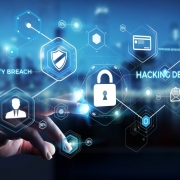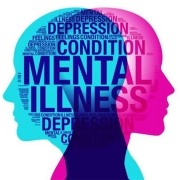Recreating a Community at Work
For decades, we’ve been living lonelier, more isolated lives. As our social connectedness and sense of community has decreased, so has our happiness and mental health. And with more aspects of our lives becoming digital, it has reduced our opportunities for everyday social interaction. The nature of our work, in particular, has shifted.
In 2014, Christine and Energy Project CEO Tony Schwartz partnered to learn more about what stands in the way of being more productive and satisfied at work. One of the more surprising findings was that 65% of people didn’t feel any sense of community at work.
That seemed costly (and sad!), motivating Christine to write Mastering Community, since lonelier workers report lower job satisfaction, fewer promotions, more frequent job switching, and a higher likelihood of quitting their current job in the next six months. Lonelier employees also tend to perform worse.
During the pandemic, many of us became even more isolated. Community, which we define as a group of individuals who share a mutual concern for one another’s welfare, has proven challenging to cultivate, especially for those working virtually. To learn more, we conducted a survey with the Conference for Women in which we asked nearly 1,500 participants about their sense of community at work before and since the pandemic and found it has declined 37%. When people had a sense of community at work, we found that they were 58% more likely to thrive at work, 55% more engaged, and 66% more likely to stay with their organization. They experienced significantly less stress and were far more likely to thrive outside of work, too.
People can create community in many ways, and preferences may differ depending on their backgrounds and interests. Here are several ways companies have successfully built a sense of community at work that leaders can consider emulating at their own organizations.
Create mutual learning opportunities
After creating an internal university for training years ago, Motley Fool, the stock advisor company, realized that the teachers got even more out of it than the students. The feedback led to a vibrant coaching program in which about 10% of employees act as a coach to other employees. For many, being a coach is a favourite part of their job. Chief People Officer Lee Burbage said, “When you think of progress and growth in a career, your mind tends to stay boxed into ‘What is my current role? What am I doing?’…we really try to encourage side projects…taking on a teaching role, taking on a coaching role, being a leader in one of our ERGs, that sort of thing.”
Burbage went on to describe how the company helped foster a sense of community by enabling employees to learn from one another in a less formal way:
We’ve had incredible fun and incredible effectiveness going out to [employees] and saying, “Hey, is anybody really good at something and would be interested in teaching others?” All it takes is for them to set up a Zoom call. We’ve had everything from DJ class to butchering class. How to make drinks, how to sew. Tapping into your employees and skills they may already have that they’d be excited to teach others, especially in the virtual world, that makes for a great class and creates an opportunity again for them to progress and grow and meet new people.
Plug into your local community
Kim Malek, the cofounder of ice cream company Salt & Straw, forges a sense of meaning and connectedness among employees, customers, and beyond to the larger communities in which her shops are located. From the beginning, Kim and her cousin and cofounder, Tyler Malek, “turned to their community, asking friends — chefs, chocolatiers, brewers, and farmers — for advice, finding inspiration everywhere they looked.”
Kim and Tyler worked with the Oregon Innovation Centre, a partnership between Oregon State University and the Department of Agriculture, to help companies support the local food industry and farmers. Kim Malek told Christine that every single ice cream flavour on their menu “had a person behind it that we worked with and whose story we could tell. So that feeling of community came through in the actual ice cream you were eating.”
On the people side, Salt & Straw partners with local community groups Emerging Leaders, an organization that places BIPOC students into paid internships, and The Women’s Justice Project (WJP), a program in Oregon that helps formerly incarcerated women re-join their communities. They also work with DPI Staffing to create job opportunities for people with barriers like disabilities and criminal records, and have hired 10 people as part of that program.
In partnership with local schools, Salt & Straw holds an annual “student inventors series” where children are invited to invent a new flavour of ice cream. The winner not only has their ice cream produced, but they read it to their school at an assembly, and the entire school gets free ice cream. This past year, Salt & Straw held a “rad readers” series and invited kids to submit their wildest stories attached to a proposed ice cream flavour. Salt & Straw looks for ways like this to embed themselves in and engage with the community to help people thrive. It creates meaning for their own community while also lifting up others.
Create virtual shared experiences
Develop ways for your people to connect through shared experiences, even if they’re working virtually. Sanjay Amin, head of YouTube Music + Premium Subscription Partnerships at YouTube, will share personal stories, suggest the team listen to the same album, or try one recipe together. It varies and is voluntary. He told Christine he tries to set the tone by being “an open book” and showing his human side through vulnerability. Amin has also sent his team members a “deep question card” the day before a team meeting. It’s completely optional but allows people to speak up and share their thoughts, experiences, and feelings in response to a deep question — for example:
If you could give everyone the same superpower, which superpower would you choose?
What life lesson do you wish everyone was taught in school?
He told Christine, “Fun, playful questions like these give us each a chance to go deep quickly and understand how we uniquely view the world” and that people recognized a shared humanity and bonding.
EXOS, a coaching company, has a new program, the Game Changer, that’s a six-week experience designed to get people to rethink what it means to sustain performance and career success in the long run. Vice President Ryan Kaps told Christine, “Work is never going back to the way it was. We saw an opportunity to help people not only survive, but thrive.”
In the Game Changer, members are guided by an EXOS performance coach and industry experts to address barriers that may be holding them back from reaching their highest potential at work or in life. Members learn science-backed strategies that deepen their curiosity, awaken their creativity, and help sustain energy and focus. The program structure combines weekly individual self-led challenges and live virtual team-based huddles and accountability, which provide community and support. People who’ve completed the Game Changer call it “transformative,” with 70% of participants saying they’re less stressed and 91% reporting that it “reignited their passion and purpose.”
Make rest and renewal a team effort
Burnout is rampant and has surged during the pandemic. In our recent survey, we found that only 10% of respondents take a break daily, 50% take breaks just once or twice a week, and 22% report never taking breaks. Distancing from technology is particularly challenging, with a mere 8% of respondents reporting that they unplug from all technology daily. Consider what you can do to focus on recovery, together.
Tony Schwartz told Christine about the work his group did with a team from accounting firm Ernst and Young. In 2018, this team had been working on a particularly challenging project during the busy season, the result being that the team members became so exhausted and demoralized that a majority of them left the company afterward.
To try to change this, the 40-person EY team worked with the Energy Project to develop a collective “Resilience Boot Camp” in 2019 focused on teaching people to take more breaks and get better rest in order to manage their physical, emotional, and mental energy during especially intense periods. As a follow up, every other week for the 14 weeks of the busy season, the EY employees attended one-hour group coaching sessions during which team members discussed setbacks and challenges and supported one another in trying to embrace new recovery routines. Each participant was paired with another teammate to provide additional personal support and accountability.
Thanks to the significant shifts in behaviour, accountants completed their work in fewer hours and agreed to take off one weekend day each week during this intense period. “Employees were able to drop 12 to 20 hours per week based on these changes, while accomplishing the same amount of work,” Schwartz told Christine.
By the end of the 2019 busy season, team members felt dramatically better than at the end of 2018’s. And five months after the busy season, when accounting teams typically lost people to exhaustion and burnout, this EY team’s retention stood at 97.5%. Schwartz told Christine that his main takeaway from that experience was “the power of community.”
Community can be a survival tool — a way for people to get through challenging things together — and helps move people from surviving to thriving. As we found, it also makes people much more likely to stay with your organization. What can you do to help build a sense of community?
Given our current situation knowing that your colleagues or employees are best suited for this new scenario we find ourselves in. Finding the right talent, the best fit for the job and your organisation can be a very challenging task. It is now important to find out whether your managers or your team is well-equipped of working together from various locations. It requires deep knowledge of their personalities, strengths, weaknesses, interests, work style and other characteristics. Our technology and solutions will do the work for you, helping you discover if your people are resilient during times of hardship, if they are autonomous, if they are team players, without actual human contact. Given that our platform is cloud-based, everyone can use it from home as well. Humanity finds itself at a crossroad for various reasons now, why not help people discover and develop themselves from the comfort of their own homes?
Request a free demo:

Sources:
https://www.weforum.org/agenda/2021/11/researchers-discover-best-way-to-avoid-procrastination
https://medium.com/productivity-power/can-a-self-imposed-deadline-help-beat-procrastination-13936992d1ea
https://www.fastcompany.com/3026895/self-imposed-deadlines-dont-stop-procrastination-heres-what-might











